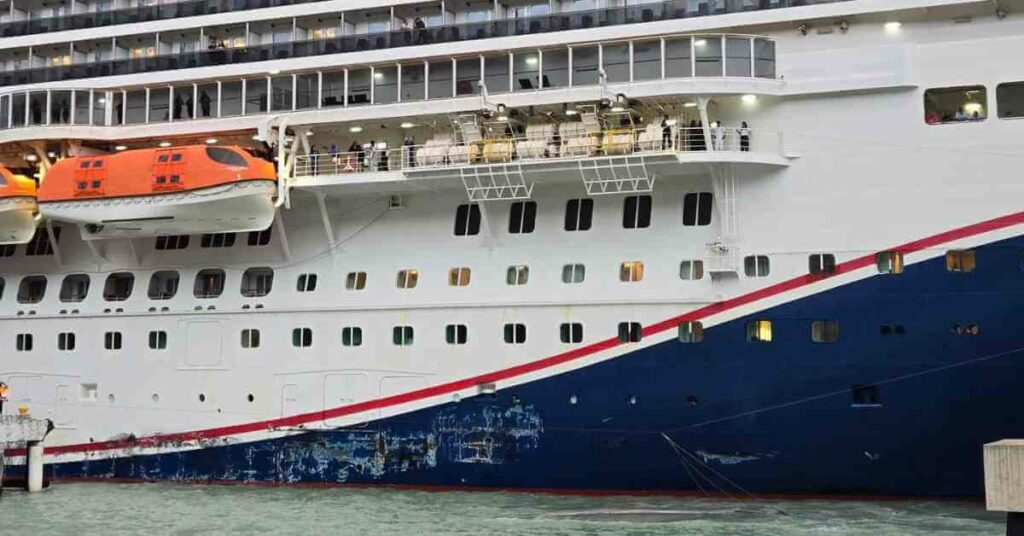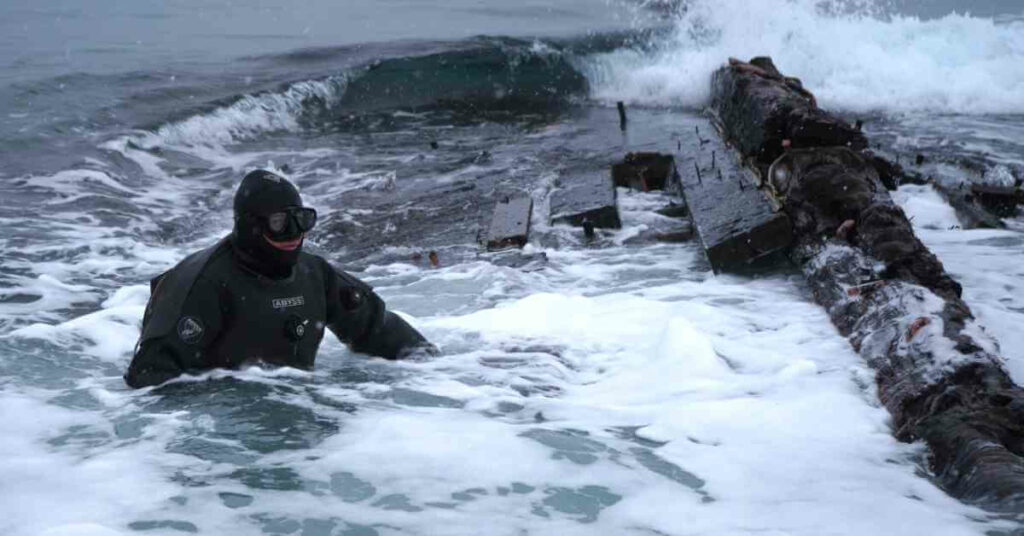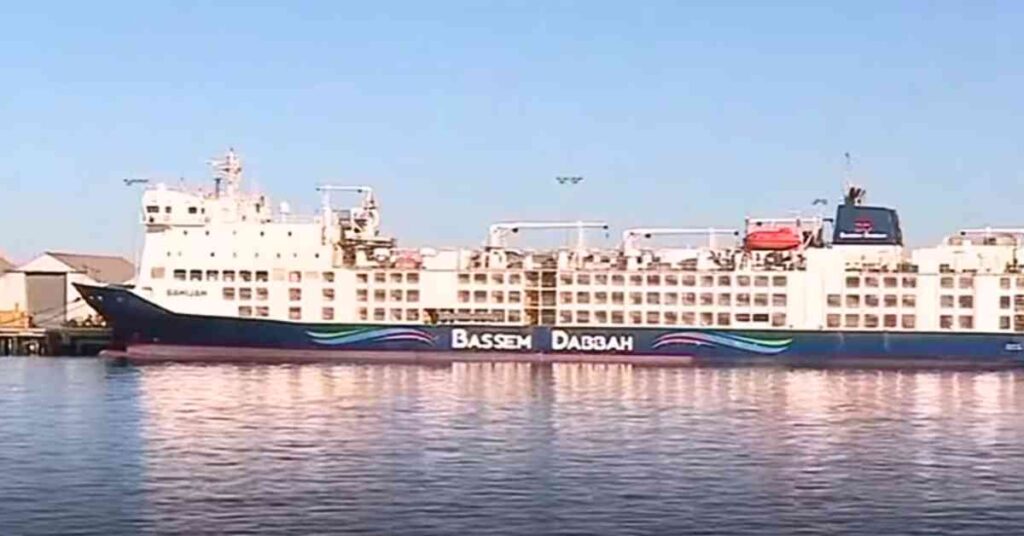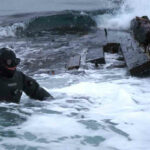Video: Japanese Research Ship Fires An Electromagnetic Railgun
On 17 October, the Japanese military declared that it had managed to successfully test-fire a railgun on a ship.
This test was carried out by the Acquisition Technology and Logistics Agency, Japan’s DARPA analogue, and was done in collaboration with Japan’s Maritime Self-Defense Force.
Video Credit: Defence Simplified
The railgun was framed as a protective step forward: by firing the high-speed bullets, the railgun would help stop any incoming attack via air or on the sea.
Most of the bullets are fired with the help of a chemical propellant — a sparked result or reaction which ignites intense gunpowder of a shot, which expands rapidly into gasses, which propel a bullet down through a gun barrel at very high speeds toward a target.
It is a highly durable design, one that is tweaked continuously and iterated on for a total of millennia.
Railguns aim to rapidly propel a bullet through the air. Still, rather than using an explosion for the purpose, railguns make use of electromagnetic forces for pulling and accelerating a metal slug at greater speeds and at long ranges.
Japan’s military has reportedly planned for a railgun since 2015, with the aim of ship-mounted weapons as part of the initial idea right from the beginning.
A demonstration of a railgun in 2016 accelerated its projectile to approximately 4,470 mph, which is 5.8 times more than the speed of sound.
That is the hypersonic speed, precisely the range in which a new range of missiles currently in development by countries like the US, Russia, and China are specially designed to fly.
By coming up with a gun that is able to shoot projectiles, which are able to fly faster than hypersonic missiles, a railgun could be a tool that will be able to shoot down such weapons.
A proposal for Japan’s this year’s defence budget refers to railguns being able to fire projectiles at a high muzzle velocity and in rapid succession for countering threats like those of hypersonic missiles.
Starting in the fiscal year 2022, the nation has been conducting research that is focused on establishing the overall tech necessary for the early realization of railguns, which includes rapid-fire drills as well as stability while in flight, which are key to the application of railguns, a spokesperson associated with Acquisition Technology and Logistics Agency informed Naval News.
At the same time, they have been holding demonstration tests aimed at practical applications, like carrying a railgun on the vessel and conducting offshore firing.
The Ministry of Defense aims to work toward the early use of railguns for accelerating the strengthening and enhancements of Japanese defence capabilities.
For test-firing, the railgun was reportedly mounted on an Asuka-class research vessel dubbed the JS Asuka, which has served as a testbed for sensor and missile tech in the past.
Janes reported that critical details of this weapon, such as projectile weight and muzzle velocity, are currently kept confidential.
In a 2018 test, a Japan-based Acquisition Tech and Logistics Agency railgun successfully fired a projectile at a reported speed of approximately Mach 6.5.
In March 2022, the Agency released a video, and the design of a 2020 prototype has also been discussed.
A part of the concern revealed that accelerating a projectile along a rail at speeds can result in serious erosion, impair the weapon and limit its future utility.
The prototype ended up firing a 40mm projectile at the same 4,470 mph speed as in the 2016 demonstration.
Railguns can be powerful guns for vessels, and they could be used to safeguard from incoming missiles, as the Acquisition Tech and Logistics Agency expresses.
The high-exit velocities permit the bullets to function as offensive hypersonic weapons, powerful slugs slamming into vehicles or buildings with high kinetic force.
Before aircraft carriers, gun vessels with cannons, known as battleships, were the dominant vessels for war at sea, with guns that could bombard inland and, at the same time, devastate foes at sea.
Improved long-range sensors, particularly radar, and the far reach of aeroplanes launched from aircraft carriers during and after WWII indicate that from the Cold War to the current, shipboard guns switched from a primary threat to more enhanced circumscribed weapons, with ship-launched cruise missiles taking over inland bombardment.
Railguns, with the promise of powerful long-range shots that can stop missiles, sink vessels, and devastate coastal defences, offer a path back to relevance for shipboard guns.
The US Navy has continued pursuing railgun development, with the aim that a projectile fired from such can intercept upcoming attacks, as well as hit targets that are as far as 50–100 nautical miles.
A part of the challenge involves building a projectile that can operate in railguns, as well as from already existing cannons on the US Navy vessels.
In the meanwhile, the continued development of railguns as a counter-hypersonic weapon must complicate how military planners consider missiles as the answer to vessels as well as seaborne threats.
Do you have info to share with us ? Suggest a correction
About Author
Marine Insight News Network is a premier source for up-to-date, comprehensive, and insightful coverage of the maritime industry. Dedicated to offering the latest news, trends, and analyses in shipping, marine technology, regulations, and global maritime affairs, Marine Insight News Network prides itself on delivering accurate, engaging, and relevant information.

About Author
Marine Insight News Network is a premier source for up-to-date, comprehensive, and insightful coverage of the maritime industry. Dedicated to offering the latest news, trends, and analyses in shipping, marine technology, regulations, and global maritime affairs, Marine Insight News Network prides itself on delivering accurate, engaging, and relevant information.
Latest Videos Articles You Would Like:
- Watch: Giant Disney Cruise Ship Maneuvers Through Impossibly Narrow River
- Cruise Ship Damaged Due To Severe Weather, Passengers Stuck Abroad
- Archaeologists Examine 19th-Century Shipwreck Found On Canadian Coast
- Australia Stops Livestock Ship From Sailing Around Africa To Israel Amidst Houthi Attacks
- Iran Warns U.S. Of Targeting Cargo Ships Following Latest Airstrikes On Houthis
- Watch: Ukrainian Forces Destroy Russian Missile Boat In Black Sea Operation
Daily Maritime News, Straight To Your Inbox
Sign Up To Get Daily Newsletters
Join over 60k+ people who read our daily newsletters
By subscribing, you agree to our Privacy Policy and may receive occasional deal communications; you can unsubscribe anytime.















